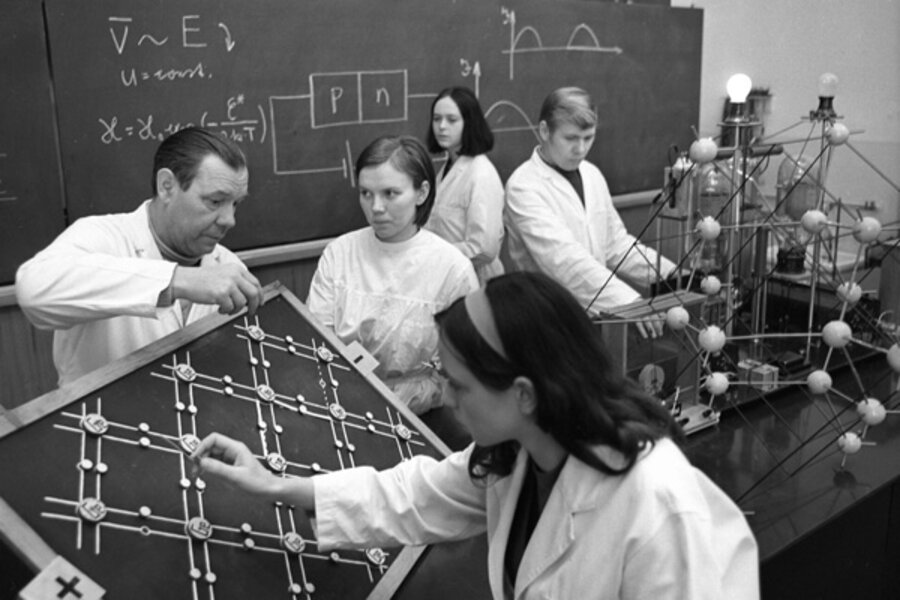Physics is always a work in progress
Loading...
Laws of physics have their limits. Newton's law of gravity is good enough to guide astronauts to the Moon. But it took Einstein's more sophisticated gravity law to design the GPS system that guides you through unfamiliar streets. Now a research team has measured the long-anticipated breakdown on another great physical law – Max Planck's law of thermal radiation.
It happens at very small separations between two objects, such as the space between the recording head and the hard disk in your computer. Knowing the rate of thermal-radiation exchange between head and disk is a key element in designing hard-disk data-recording systems, in which the recording head tends to heat up.
MIT physicist Gang Chen calls this "a very important issue for magnetic storage."
Thus the basic physics that Professor Chen, his student Sheng Shen at MIT, and partner Arvind Narayaswamy at Columbia University are pursuing has immediate relevance in our everyday world. Already, it shows that the thermal exchange at very small separations between two surfaces can be 1,000 times greater than Planck's law predicts. That's something hard disk designers need to know.
This research illustrates a fundamental truth about science: Nature knows nothing of the scientific laws we cook up. Nature does its own thing. We observe what it does. When we see regularities in natural phenomena we encode our observations in what we call "natural laws.” These reflect what we know about nature at any given time. They allow us to predict cause-and-effect relationships. But they can break down when we try to use them in situations where their underlying assumptions don't apply.
Newton's gravity law assumes an attractive force between two or more bodies that has no effect on time. It handles the orbits of planets and spacecraft very well. Einstein's gravity law assumes no gravitational force. Instead, it assumes that the mass of a body, such as the Sun, distorts time and space. A planet moving through space that is only slightly distorted by the mass of the Sun travels a course very close to what Newton's theory predicts. Newton's theory breaks down in situations where space-time distortion is important. That includes GPS navigation, which depends on very precise timing of signals between satellites and ground equipment. Time runs slightly faster at satellite altitude. Thus GPS engineers need to know when to abandon Newton and follow Einstein.
When Planck published his thermal-radiation theory 109 years ago, he warned that it might break down when two physical objects are very close to each other. Physicists have been looking for that breakdown as nanotechnology has developed ever-smaller physical systems. In Nano Letters this month, Chen and his colleagues tell how they measure heat transfer across gaps as small as 10 nanometers (10 billionths of a meter). That's comparable to the 6 to 7 nanometer gap between a recording head and a hard disk. Mr. Shen notes that engineers now can know that Planck’s law heat-flow predictions are "not a fundamental limitation" as they try to achieve higher energy densities and higher efficiencies in nano devices.
Physical law is always a work in progress. When what we call law today eventually breaks down, new opportunities for scientific and engineering progress usually appear.





